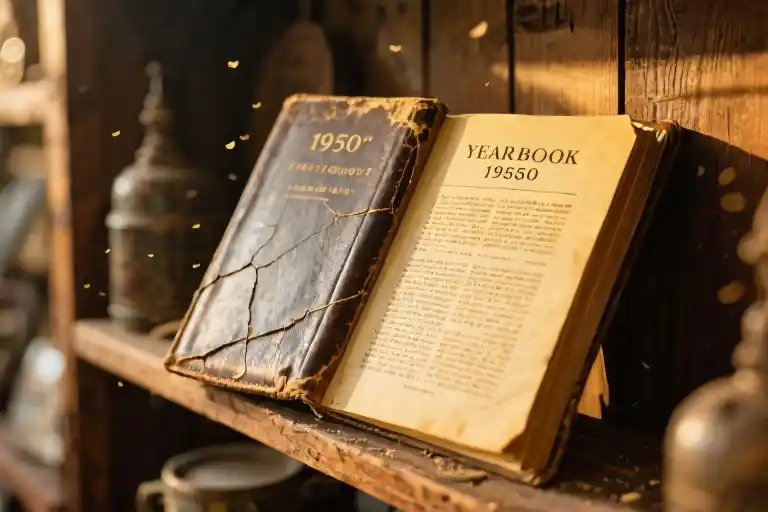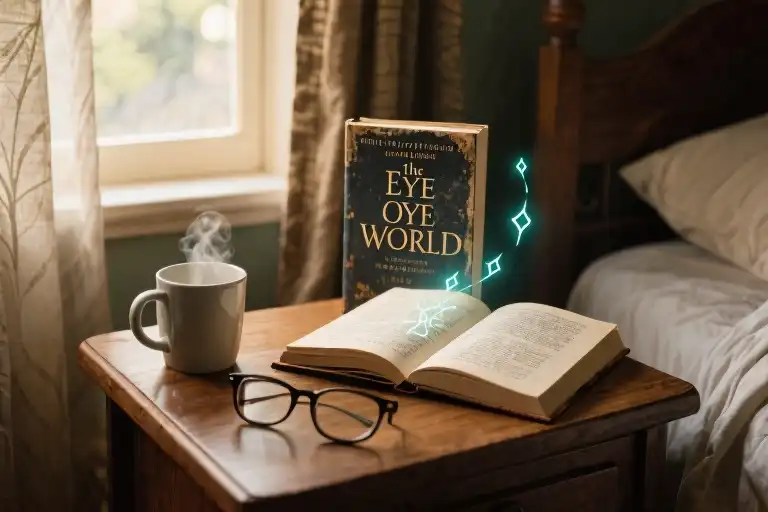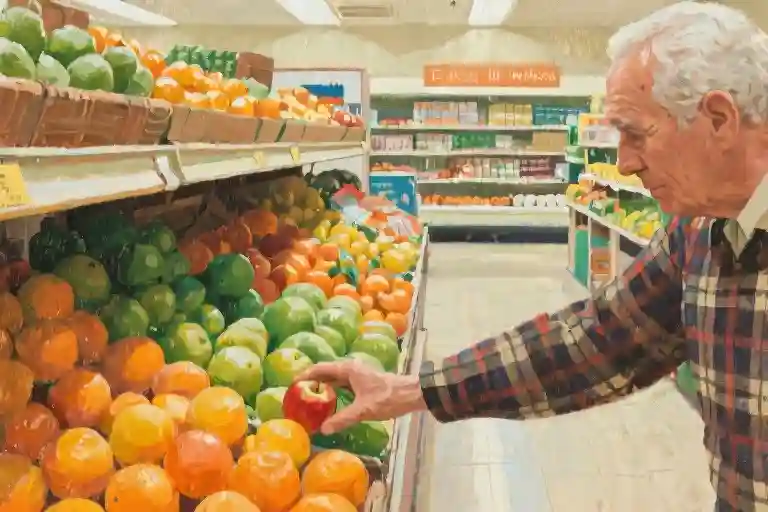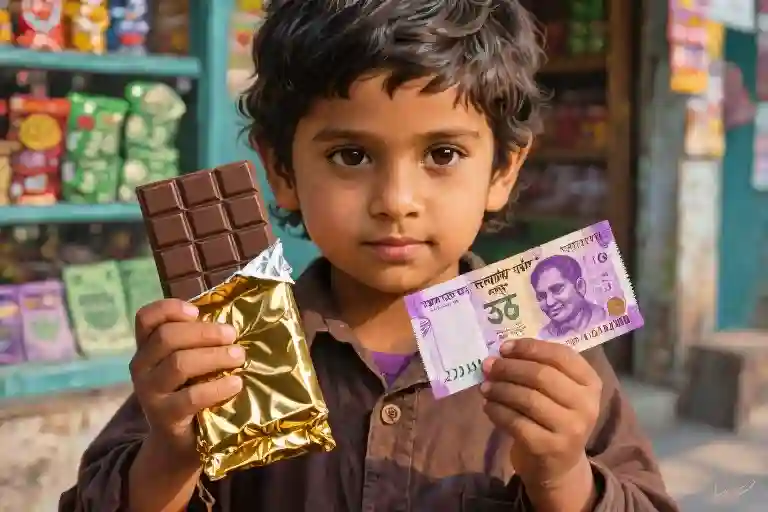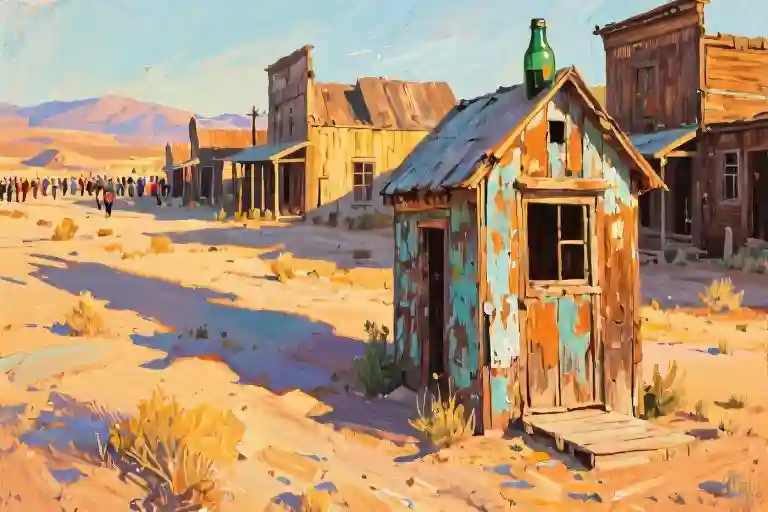The afternoon light slanted through the grimy windows of the antique store in Washington state, turning floating dust motes into golden specks suspended in time. In that drowsy stillness where forgotten objects whispered their histories, my fingers trailed across a shelf’s weathered edge until they met resistance – the slightly raised spine of a 1959 yearbook, its once-gilded lettering now tarnished to a shadow of its former brilliance.
A cobweb stretched from the book’s bottom corner to the shelf like a final attempt to anchor itself to the world. As I brushed it away, a faint tremor seemed to run through the pages, as if the volume had been holding its breath for decades and finally exhaled at human contact. The leather cover yielded with a soft creak, releasing the scent of pressed flowers and fading ink – the distinctive perfume of abandoned memories.
This vintage yearbook, nestled between a chipped porcelain doll and stack of yellowed National Geographic magazines, carried the weight of countless untold stories in its dog-eared pages. Its cracked binding bore witness to years of neglect, yet the embossed school crest on the front remained stubbornly proud. The edges of the cover showed water stains that bloomed like memories fading at the periphery, while the spine’s careful repair with aged Scotch tape hinted at someone’s once-tender attention.
Sunlight caught the dust swirling around my hands as I turned the first brittle page, revealing a carefully inked inscription: “To Nancy, may your future be as bright as your smile. – Martha.” The handwriting, once bold and looping, had faded to a ghostly gray, yet it pulsed with an immediacy that transcended the sixty-odd years since its writing. In that moment, the antique store’s background murmur of ticking clocks and creaking floorboards faded away, replaced by the imagined sounds of 1950s laughter and swing music drifting from these very pages.
The yearbook’s physicality struck me first – the way the paper resisted slightly at each turn, how certain pages fell open more easily than others, revealing their frequently visited secrets. A pressed carnation left a rust-colored silhouette on the dedication page, while faint pencil marks in the margins traced someone’s long-ago journey through these memories. These tactile details formed an unbroken chain connecting past to present, making the decades between Nancy’s graduation and this chance discovery feel startlingly thin.
As I ran my thumb along the edge of the pages, a small shock of static electricity jumped to my skin – perhaps the last stored energy from hands that had held this book with youthful excitement or nostalgic longing. The sensation traveled up my arm, carrying with it an unexpected wave of recognition. Somewhere in my father’s belongings, packed away in cardboard boxes that smelled of damp and disuse, lay a similar time capsule from his school days. The parallel between these memory objects – one discovered by chance, the other deliberately preserved yet equally forgotten – hung in the air between my turning pages.
The Time Capsule of a Stranger
The yearbook’s spine cracked with the sound of decades-old glue surrendering to movement. Nancy’s name, written in that distinct mid-century cursive, curled across the inside cover like a shy introduction. Flipping through the pages released the scent of pressed flowers and faded ink – the particular perfume of abandoned memories.
Her senior portrait showed a young woman with carefully set waves, the kind that required sleeping in pin curls. The caption listed her as Debate Club Vice President and Drama Society Stage Manager. Between pages 22 and 23, a flattened rose petal crumbled at my touch, its once-vibrant red now the color of old parchment. Someone had written “Our Lady Macbeth” beneath her drama club photo, the ink slightly smudged as if brushed by a thumb soon after writing.
Page 23 bore the marks of frequent visitation – a soft crease along the gutter, corners worn smooth from handling. In the margin beside the choir roster, a tiny pencil star caught the light at just the right angle. The mark was precise yet intimate, the kind of private notation one makes without conscious thought. It mirrored exactly the asterisks my father would leave in his electrical manuals – always in the same soft lead pencil, always at passages he considered essential.
The choir photo showed Nancy in the second row, her expression different from the formal portraits. Here she was caught mid-laugh, eyes crinkled with genuine amusement, standing beside a boy whose arm just barely touched hers. The star pointed to nothing in particular, hovering near but not directly on either figure. Had this been her secret touchstone, a visual bookmark to return to this moment of unguarded happiness?
As I ran my finger over the indentation left by that decades-old pencil, the connection struck with physical force: objects become sacred not through their inherent value, but through the weight of attention we give them. That small graphite star had outlasted Nancy’s laughter, the boy’s touch, perhaps even their memories of each other. Now it bridged time to speak to a stranger about the universal human impulse to mark our passages.
In my father’s garage, his own yearbook waited with similar silent testimonies – the dog-eared page of his basketball team photo, the underlined quote about integrity in the faculty message section. Our most ordinary objects become extraordinary through the simple act of being remembered, then forgotten, then remembered again.
The Parallel Universe in the Garage
The rain hammered against the garage roof like a thousand impatient fingers as I knelt before the cardboard boxes. That damp leather smell – the one that clings to old baseball gloves and neglected briefcases – rose to meet me as I lifted the flaps. Somewhere beneath my father’s collection of electrical manuals and yellowed newspaper clippings lay his 1961 yearbook, waiting to whisper across six decades.
My fingers brushed against its cracked leather cover at the same moment a thunderclap shook the single bulb overhead. The coincidence felt theatrical, as if the universe had cued dramatic lighting for this archival moment. Opening it released a puff of that particular library-scent – equal parts mildew and memories – that no candle company could ever authentically replicate.
Inside, my seventeen-year-old father grinned up at me from the basketball team photo, his tie slightly askew in that way I remembered from Sunday mornings. The resemblance between his team portrait and Nancy’s cheerleading squad in the 1959 yearbook startled me – same stiff postures, same hopeful squints against the photographer’s lights. Two strangers separated by state lines and two years, yet bound by the universal language of adolescent optimism captured in silver gelatin.
I nearly missed the pencil marks in the margin. There, beside his class prophecy (“Future Businessman of America”), my father’s adult handwriting – the same that signed my permission slips and birthday cards – had added three faint words: “Never quite happened.
The rain intensified as I traced those letters, each droplet against the garage door sounding like a ticking clock. His basketball teammates had gone on to become accountants and insurance salesmen according to the alumni notes, their trajectories neatly matching those black-and-white predictions. Only my father’s path had veered unexpectedly into factory work and night school, his business ambitions gradually replaced by the more pressing arithmetic of mortgage payments.
Funny how these vintage yearbooks serve as time capsules in dual senses – preserving not just the era they document, but also the moments when their owners revisited them. That penciled notation was clearly added decades later, perhaps during one of those sleepless nights I’d find him at the kitchen table with paperwork spread before him. The young man in the photo couldn’t have imagined that marginalia, just as Nancy probably never pictured a stranger studying her teenage smile in an antique shop sixty years on.
I closed the yearbook carefully, noticing how its spine had developed the same slight hunch as my father’s shoulders in his later years. The storm outside had settled into a steady rhythm, the kind of rain that soaks deep into the earth rather than bouncing off the surface. It occurred to me that we preserve these memory objects not for who we were when we created them, but for who we might become when we rediscover them.
That’s the magic of physical mementos – they wait patiently in garages and antique stores until the precise moment their yellowed pages can bridge generations. Digital archives may organize our past efficiently, but they’ll never accidentally fall open to exactly the right page during a summer thunderstorm, releasing ghosts we didn’t know we needed to meet.
Between Two Graduation Photos
The black-and-white image of Nancy’s 1959 graduating class stared up at me with an almost formal dignity – boys in crisp suits with narrow ties, girls in shirtwaist dresses and single-strand pearls. Their poses were uniformly upright, shoulders squared toward the camera as if facing life itself. Turning to my phone, I swiped four times through digital albums to find last year’s graduation photo from my niece’s high school: a kaleidoscope of graphic tees, rainbow-dyed hair, and arms casually slung over shoulders in spontaneous embraces.
This visual dissonance between eras fascinated me. Where Nancy’s generation had inscribed their yearbook with earnest pledges (“To be a credit to my community” or “Remember our class motto: Integrity First”), my niece’s classmates scrawled inside jokes and Instagram handles. The shift from collective ideals to personal expression wasn’t merely stylistic – it mapped the seismic cultural transformation between the Eisenhower administration and the TikTok era.
Three particular contrasts stood out:
- Dress Codes as Social Contracts
The wool suits and gloves in 1959 weren’t just clothing but visible commitments to conform. Today’s crop tops and slogan hoodies broadcast individuality like personal billboards. I traced a finger over Nancy’s class photo, noticing how even the rebellious greasers had polished shoes – their defiance limited to slightly longer sideburns. - The Shrinking Half-Life of Memory
A Pew Research study flashed through my mind: American yearbooks now have an average preservation period of just 7 years compared to 34 years in 1960. Nancy’s tangible artifact survived six decades through attics and estate sales, while my niece’s digital yearbook lives on a school server vulnerable to software updates. - Handwriting as Emotional DNA
The shaky ink of a 1959 classmate’s message (“Let us correspond! My new address…”) carried more vulnerability than any perfect Snapchat streak. Modern comments like “DM me lol” felt ephemeral by comparison, their very casualness a defense against permanence.
Yet as I compared these memory objects across time, an unexpected commonality emerged. Whether pressed between cardboard covers or floating in cloud storage, both yearbooks ultimately asked the same human questions: Who was I then? Who remembers me now? The answers just wear different cultural costumes.
Memory objects like Nancy’s yearbook and my niece’s Instagram archive serve as temporal bridges. They allow us to touch the past with our present hands, to measure how far we’ve traveled by how foreign our former selves appear. That afternoon in the antique shop, holding two generations in my palms, I understood these artifacts aren’t just records – they’re conversations waiting to happen across decades.
Your turn: When was the last time you compared an old keepsake with its modern equivalent? What surprised you in the comparison?
Who Remembers
The weight of the 1959 yearbook in my hands felt different from scrolling through a digital photo album. Its cracked spine and yellowed pages carried a tactile memory that no cloud storage could replicate. As I traced Nancy’s faded signature with my fingertip, a neuroscientist’s words echoed in my mind: ‘Tactile stimuli create 23% stronger emotional recall than visual stimuli alone.’ That coffee stain on page 17 wasn’t just a blemish—it was a time capsule of someone’s hurried breakfast sixty years ago.
In our TikTok era of disposable content, we’ve traded physical mementos for infinite scrolls. Museum archivists call this ‘memory hypothermia’—when cultural artifacts lose their emotional warmth through digitization. The Oxford Memory Studies Journal recently found that while modern adults capture 300% more life moments than their 1950s counterparts, they revisit them 80% less frequently. Nancy’s yearbook survived six decades in attics and antique stores; how many of our Instagram stories will outlast next month’s algorithm change?
I noticed the shop owner watching me as I lingered near the shelf. ‘That one’s been here since we opened,’ she remarked. ‘Funny how things wait for the right person.’ Her observation made me wonder—do memory objects choose us as much as we choose them? The yearbook’s cracked leather cover seemed to whisper stories of proms and pep rallies, of handwritten notes passed between classes in an era before emojis.
Before returning it to the shelf, I deliberately angled the spine outward—a small act of rebellion against forgetting. The motion dislodged a pressed gardenia from between the pages, its brittle petals scattering like confetti across the wooden floor. As I knelt to gather these fragile remnants, the bell above the door chimed for a new customer. A teenager entered, AirPods glowing white in her ears, fingers already dancing across her smartphone screen.
When was the last time you held a physical memory that made time stand still?
The Sound of Remembering
The antique shop owner wiped his hands on his apron as he rang up my purchase. ‘Funny thing,’ he remarked, glancing at the 1959 yearbook in my hands, ‘this was going to the recycling bin next Tuesday.’ His casual admission sent an unexpected pang through me – how many memory objects meet this fate daily, their stories never rediscovered?
As I stepped toward the exit, a sudden breeze through the open door set the shop’s brass wind chimes dancing. The hollow metallic tones vibrated with peculiar familiarity, their resonance transporting me to childhood afternoons watching my father develop photos in his darkroom. That same crystalline ping had marked each successful shutter release on his vintage Rolleiflex. Now the sound seemed to echo across decades, connecting the forgotten yearbook in my hands to all the other fragile vessels of memory waiting to be heard.
I adjusted Nancy’s yearbook in my tote bag, ensuring its spine wouldn’t crease. The gesture felt like tucking in a child – this accidental time capsule that had survived sixty years only to nearly disappear into pulp. My fingers lingered on the bag’s strap, recalling the raised texture of my father’s leather-bound senior album, how its cracked cover always left a faint dusting of red pigment on my fingertips.
Outside, the afternoon light had softened into that particular gold that makes even parking lots look nostalgic. I hesitated on the threshold, the wind chimes’ fading notes settling around me like photographic developer slowly bringing images to the surface. In that suspended moment, the entire twentieth century felt present – Nancy’s hopeful grin in her bobby socks, my father’s ink-smudged signatures in his classmates’ yearbooks, the thousands of unnamed lives preserved in thrift store boxes and estate sale bins.
When was the last time you held a decade-old paper memory? Not just glanced at digitized photos, but physically touched the fragile evidence that someone once laughed, loved, and left marks on the world? That grocery list your grandmother wrote in her looping script, the postcard from a childhood vacation stuck in an old book, the theater ticket stub still faintly perfumed with your mother’s signature scent – these are our personal archaeological artifacts. In an age of cloud storage and disappearing messages, they remain stubbornly, beautifully tangible proof that we existed.
The chimes sounded again as I stepped forward, their melody dissolving into the hum of passing cars. Somewhere behind me, Nancy’s yearbook shifted in my bag, its pages whispering against my notebook. Two generations of memories now traveling together into whatever comes next.

